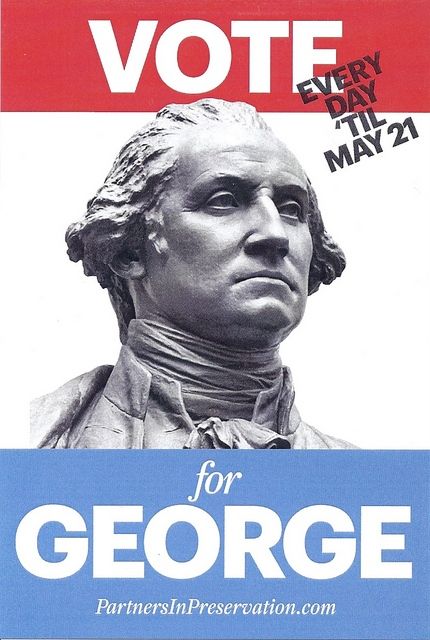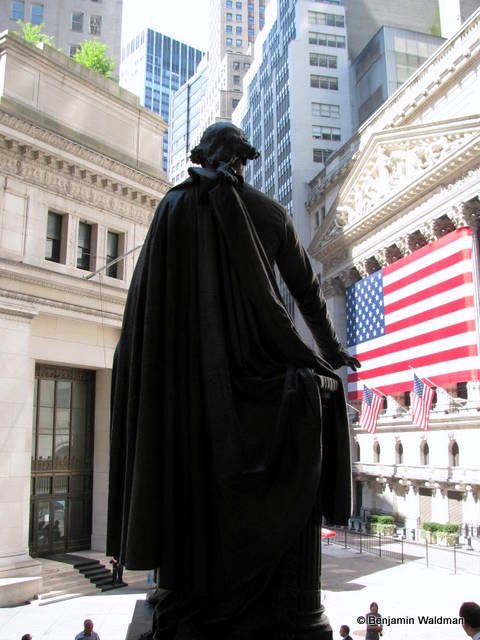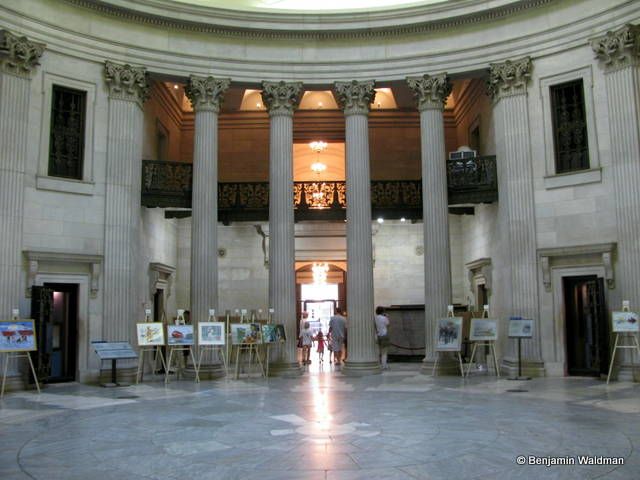Last-Minute NYC Holiday Gift Guide 🎁
We’ve created a holiday gift guide with presents for the intrepid New Yorker that should arrive just in time—


Untapped Cities is an official blog ambassador for Partners in Preservation , a community-based initiative by American Express and the National Trust for Historic Preservation to raise awareness of the importance of historic places. For complete coverage, follow our Partners in Preservation category.

In the most clever public relations move for Partners in Preservation we’ve seen so far, The National Parks Service has created a creative campaign to help the “candidacy” of the Federal Hall National Memorial, including “Vote for George” postcards, wooden tokens for those who vote at Federal Hall, and programs for children and adults.
Federal Hall National Memorial is one of the most important historic sites in New York City. The Zenger (Freedom of the Press) Trial, the Stamp Act Congress (No Taxation Without Representation), the Judiciary Act of 1789 (Creation of the Federal Courts), George Washington’s inauguration, and the Bill of Rights are all directly tied to the site. Therefore, it is not surprising that Federal Hall is one of the 40 locations in this year’s Partners for Preservation, a community-based initiative by American Express and the National Trust for Historic Preservation. As New York City’s first-ever citywide grassroots preservation effort, the call-to-action program will enlist the aid of all New Yorkers, and anyone who loves New York, to vote online to allocate $3 million dollars to the preservation projects most important to them. The National Parks Service is hoping to repair the statue of George Washington located on the front steps of Federal Hall. “Exposure to rain, freezing temperatures, birds, inappropriate coatings, and visitors have left the primary entrance area to Federal Hall NM and statue in poor condition. [The Parks Service] proposes repairing existing bird netting, replacing failed faux-bronze finish to doors, aesthetically reintegrating areas of finish loss on statue, cleaning all surfaces, and adding protective coatings to statue and the metal plaque above the doors.

The first Federal Hall was constructed between 1699 and 1702 as the third location of New York City’s City hall. In 1735, Zenger, who was a newspaper publisher, was arrested for committing seditious libel against the British royal governor. He was imprisoned and tried in what was then City Hall (the first Federal Hall building). His acquittal on the grounds that the material he had printed was true established the freedom of the press as it was later defined in the Bill of Rights.
The next important event to take place on this site occurred in 1765. In October of that year, 27 delegates from 9 of the 13 colonies met as the Stamp Act Congress. They met in response to England’s enactment of the Stamp Act of 1765, which imposed a duty on any paper document, including things as mundane as receipts, licenses, advertisements, playing cards, and even newspapers. This was the first organized opposition to British policy. The message, sent to King George III and Parliament, asserted that the colonists were entitled to the same rights as the residents of England, and that there should not be any “taxation without representation.”
After ratification of the Constitution, City Hall became Federal Hall, the first capitol building of the United States under the Constitution. The first Congress convened here on March 4, 1789, and elected George Washington as president. On April 30, 1789, Washington was inaugurated on the balcony of Federal Hall.

In 1790, the capital moved to Philadelphia, and the building here served as the State capitol until 1796, when it again became New York City Hall until its demolition in 1812. The building was razed and sold for scrap, fetching $425. The stone on which George Washington stood during his inauguration and part of the balcony’s railing were saved and can be viewed inside of Federal Hall.

The current Federal Hall was constructed in 1842 as the first purposeful built Customs House in the country and is considered to be one of the best surviving examples of classical architecture in New York. The exterior was designed by Ithiel Town and Alexander Jackson Davis and the interior by John Frazee and Samuel Thompson.

That statue in question of Washington was designed by John Quincy Adams Ward in 1882. It was placed on the front steps, marking the approximate site where Washington’s inauguration occurred. In 1939, the Secretary of the Interior designated Federal Hall a National Historic Shrine and in 1955, Congress designated it a National Memorial. New York City followed their Federal counterparts and in 1965, designated the building a City Landmark.
Follow Untapped Cities on Twitter and Facebook.
Click here to Vote for George, and to find out more about Federal Hall and their programs check out their Twitter, Facebook, and Website .
Subscribe to our newsletter